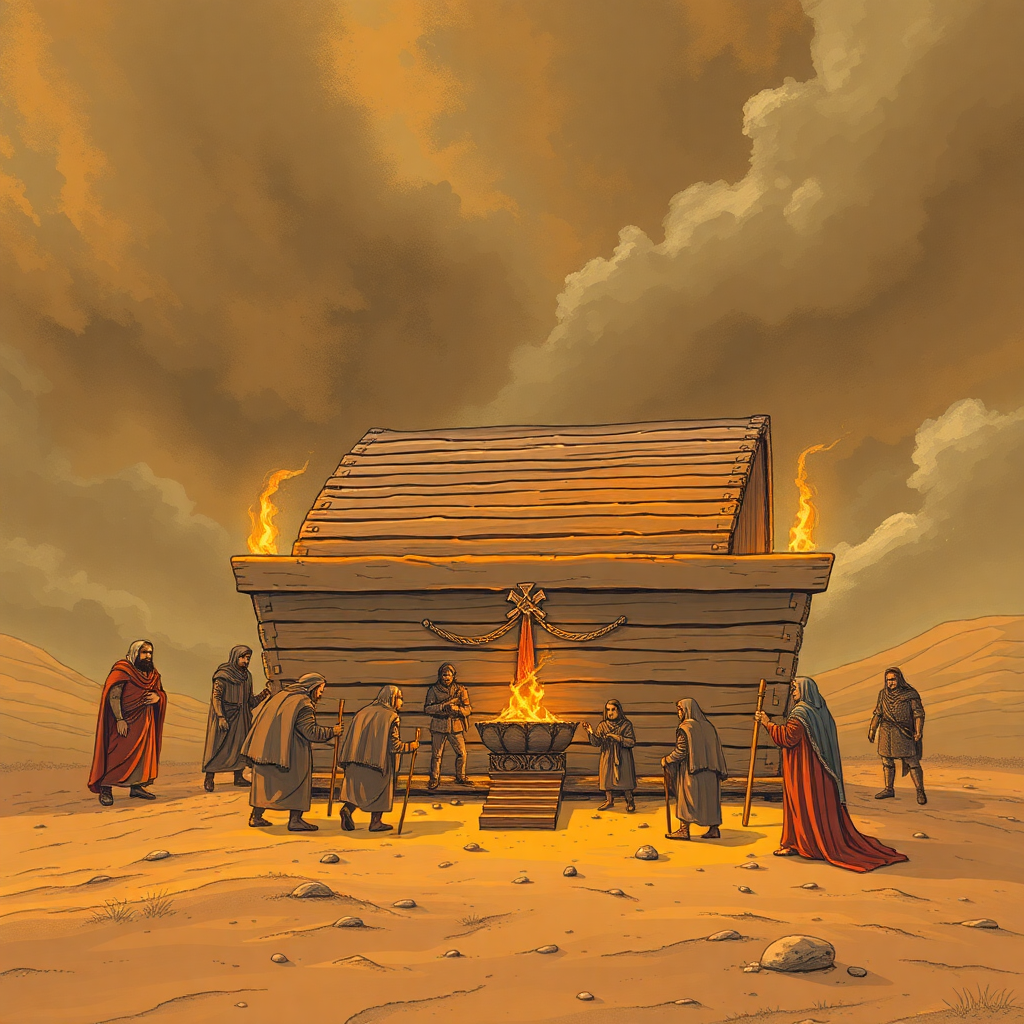What was inside the ark of the covenant?
The Ark of the Covenant contained three primary items, each of which held significant spiritual meaning and served as a reminder of the covenant between God and Israel.
The Ark of the Covenant is one of the most significant and mysterious artifacts in biblical history. Revered by the Israelites as a symbol of God's presence and a central element in their worship, the Ark held profound theological and cultural importance. Understanding what was inside the Ark of the Covenant provides insight into the beliefs, practices, and covenant relationship between God and His people.
The Ark: A Brief Overview
According to the book of Exodus, the Ark was a sacred box constructed of acacia wood and covered in gold, designed according to specific instructions given to Moses by God on Mount Sinai. The Ark measured approximately 45 inches long, 27 inches wide, and 27 inches high, making it portable for the Israelites as they journeyed through the wilderness. Atop the Ark rested the mercy seat, a solid gold cover featuring two cherubim with outstretched wings, symbolizing God's divine presence among His people.
Contents of the Ark
The Ark of the Covenant contained three primary items, each of which held significant spiritual meaning and served as a reminder of the covenant between God and Israel.
1. The Tablets of the Law
The first item among the contents of the Ark was the two stone tablets inscribed with the Ten Commandments. These commandments were fundamental laws given to the Israelites by God, outlining expectations for moral conduct and their covenant relationship with Him. The tablets represented God's ultimate authority and His desire for His people to live in accordance with His will. They served not only as legal guidelines but also as a blueprint for the Israelites to maintain a righteous relationship with God and with each other. Keeping the tablets inside the Ark underscored their central role in the covenant community.
2. The Jar of Manna
The second item inside the Ark was a golden jar filled with manna, the miraculous food provided by God to the Israelites during their 40 years of wandering in the wilderness. Manna symbolized God's sustenance and provision, as it literally fell from heaven to nourish the people when they had no food. This jar served as a reminder of God's continual care and the necessity of trusting Him for daily needs. The inclusion of manna within the Ark emphasized the lesson of dependence on God and the importance of remembering His past acts of deliverance and provision.
3. Aaron’s Staff
The third significant item contained in the Ark was the rod, or staff, of Aaron, the brother of Moses and the first high priest of the Israelites. According to the account in Numbers 17, Aaron's staff miraculously budded and produced almond blossoms as a sign of God's choice of Aaron and his descendants as priests. This staff represented divine authority and leadership. It served as a reminder to the people concerning God’s choice of the Levitical priesthood and indicated that God was actively involved in guiding His people through appointed leaders.

Symbolism and Significance
Each of the items within the Ark of the Covenant carries profound symbolic meaning that extends beyond its literal significance. Together, they encapsulated the essence of the covenant relationship between God and His people: obedience to His commandments, reliance on His provision, and recognition of His appointed leaders. The Ark itself served as a physical representation of God’s presence ("Shekinah") among the Israelites, denoting a sacred space where God could dwell among them.
In addition to being a religious artifact, the Ark played a pivotal role in key events throughout Israelite history. It led the Israelites into battle, was central to their worship practices, and was housed in the Holy of Holies within the Tabernacle and later the Temple in Jerusalem. Its eventual disappearance after the Babylonian conquest of Jerusalem remains a subject of speculation and intrigue, with various theories surrounding its fate adding an air of mystery to the Ark's legacy.
Theological Implications
The contents of the Ark also open up a broader conversation about the nature of God's relationship with humanity. The inclusion of both the Law and the elements of provision demonstrates a comprehensive interaction where moral order, sustenance, and leadership converge. In New Testament theology, Christians often draw parallels between the Ark and Jesus Christ, seeing Him as the ultimate fulfillment of the Law, the Bread of Life, and the Great High Priest. This connection highlights an evolving understanding of God's covenant, extending His presence and promises beyond the confines of the Ark.
Conclusion
As we reflect on what was inside the Ark, we are reminded of the enduring principles of faith, obedience, and reliance on God's grace that resonate throughout scripture and into our lives today. Whether viewed historically, theologically, or symbolically, the Ark of the Covenant continues to inspire a sense of reverence and connection to the divine.